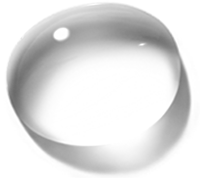At leeum
페이지 정보
본문

My first visit to Leeum, Samsung Museum of Art, at Han Nam Dong in Seoul, on July 29, was an experience different from what I had expected to make at a museum. When we, my wife and I, arrived there by taxi, to our surprise, we were greeted by two young men in white shirt and black tie at the entrance of the museum, as if we were guests arriving at a luxurious hotel. They kindly took my umbrella from my hand (it was a rainy day), locked it to a rack, gave the key to me. We were somewhat embarrassed at this unexpected reception at first, but soon felt easy and happy about it. I have been to many famous and great museums in the world including the Louvre in Paris, but nowhere have I received such an honorable and individual treatment at the entrance. Definitely Leeum in Seoul was much better than the Louvre at this point.
My euphoria was enhanced greatly by a work of art that I encountered even before I entered the museum. It was a sculpture of a huge and gigantic spider accompanied by a small one, probably its young, by Louise Bourgeois, 95 year-old living French sculptress. The pair were exhibited at the outdoor deck prepared for strolling and resting of the museum visitors on the right to the main entrance. I was overwhelmed by the unexpected object. I thought it was a work of art, simply because I liked it. The creepy, loathsome, and repulsive thing in reality had been transformed into an awe-inspiring, sublimely beautiful and even lovely creature. I could even feel the tender love between the parent spider and its young. Have you ever thought a spider could be beautiful? No? Go to Leeum, right now and see it, free of charge. It can be replaced by other object of art any time. Don't miss it.
I have been to some of the famous museums in the world as a tourist, and after making a round of them I usually felt very confused and tired. Touring a museum turned out to be more of a work than pleasure, simply because they displayed too many good pieces in one large place, and I was under the pressure and obligation to cover them all within a limited time in the jostle and bustle of the crowds. At the Louvre in Paris, for example, I was swept into the museum along with the hundreds of the tourists, felt dizzy looking around at and admiring so many great works of art hanging on the walls and displayed on the floor. Much to my chagrin and shame, I discovered later that I had missed the Mona Liza only after I got out of the museum. The crowd, too large crowd, was to blame.
That kind of tragedy or comedy will not happen at Leeum, I assure you. They control the number of visitors very effectively. You are requested to make a reservation in advance by phone or internet, if you wish to visit there. You will not miss anything valuable to see, simply because there is no rush of people. You can really have time to appreciate those good but few invaluable works of art in the most ideal atmosphere. I had seen blue celadons of Koryo and white porcelains of Yi Dynasty before and heard so much about the beauty of them, but I could not endorse the truth of the eulogy until I saw them there at Leeum.
You would not believe me if I said that Leeum provide each of you with a personal guide who will kindly and succinctly explain about the artistic treasures displayed before you. Yes, they do. To each of the visitors will be given an electric recorder the size of half of your hand and an earphone. You have the choice among the three languages: Korean, English and Japanese. You let the recorder hang down to your chest by a string around your neck, and put the earphone in one of your ears. If you stand before an old oriental painting, for example, then the electric guide starts to speak automatically in a soft and clear voice about the work before you. When you walk away, the guide stops his speech and orients itself for another object to be explained. Leeum leads all the museums in the world with this simple but revolutionary service, I think.
Certainly, Leeum is very proud of its choice treasures of art it displays and houses, and most of the visitors can see and feel them fully during the visit, but they may fail to notice or appreciate the most valuable as well as the most expensive work of art Leeum has: the architecture of Leeum. Leeum is, undoubtedly, one of the most beautiful art museums in the world but people seem to be preoccupied only by the treasures displayed, and overlook the beauty of the museum itself designed by three of the most distinguished contemporary architects in the world: Mario Botta (Swiss), Jean Nouvel (French), and Rem Koolhaas (Dutch). Don't miss the beauty created by the lines, curves, angles, open spaces, colors and materials of the roofs, stairs, floors, pillars, and walls that Leeum is made of. Being in it itself is a great aesthetic experience.
Lastly, let me tell you something about the name of the museum: Leeum. From the moment I heard of it, I was much intrigued by the sound and meaning of the word. At first it sounded strange to my ear, but soon I got used to it, and came to like its foreignness, brevity and the cosmopolitan flair and appeal it has in the time and world of globalization. And, its meaning, if it has any, is intriguing too: Lee's Museum or something. Of course, it has its Korean counterpart, but the museum is already known widely to the people as Leeum, simply because it is a good name. Personally I am very curious how or by whom it came to be first initiated, and finally chosen for this great institution of art. I remember the agony of indecision before the final choice of my "Ideas & Ideals" among so many candidate phrases for my Korea Times's column. Leeum must have been subject to much more agonizing deliberation before it was adopted once for all.
Leeum has already established and distinguished itself as a unique museum of art in our country, and will do so in the world of museums within a short period of time. After making a tour of it I felt immensely proud of the fact that we came to have, in all aspects and respects, a world-class art museum in the heart of the metropolis at long last.
(August 28, 2006)
- 이전글From Teachers To Actors 21.01.13
- 다음글The Incomplete Angler 21.01.13
댓글목록

beessong님의 댓글
beessong 이름으로 검색 작성일
Having read your column with much deligt, I hasted to visit the leeum.
I have found the vivid impressions embodied in your article to be of value and of use also in my appreciation. A sort of pride was felt when I left this world class museum.
It is no no wonder that I made up mind to visit it again in near future together with my wife as soon as she returns home from the trip abroad. I am sure she will definetely give me the highet marks ever gained as a husband. Thanks.








